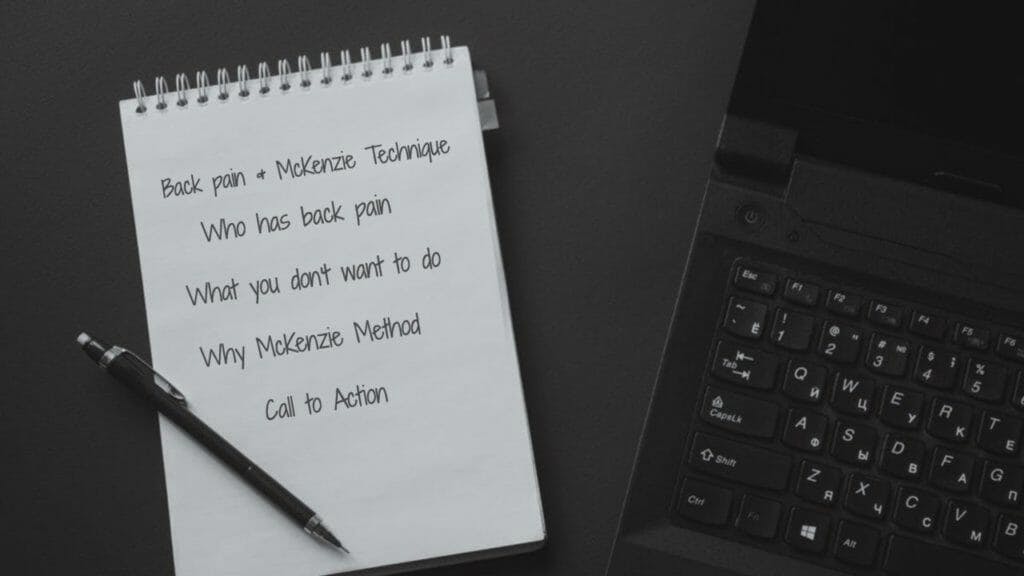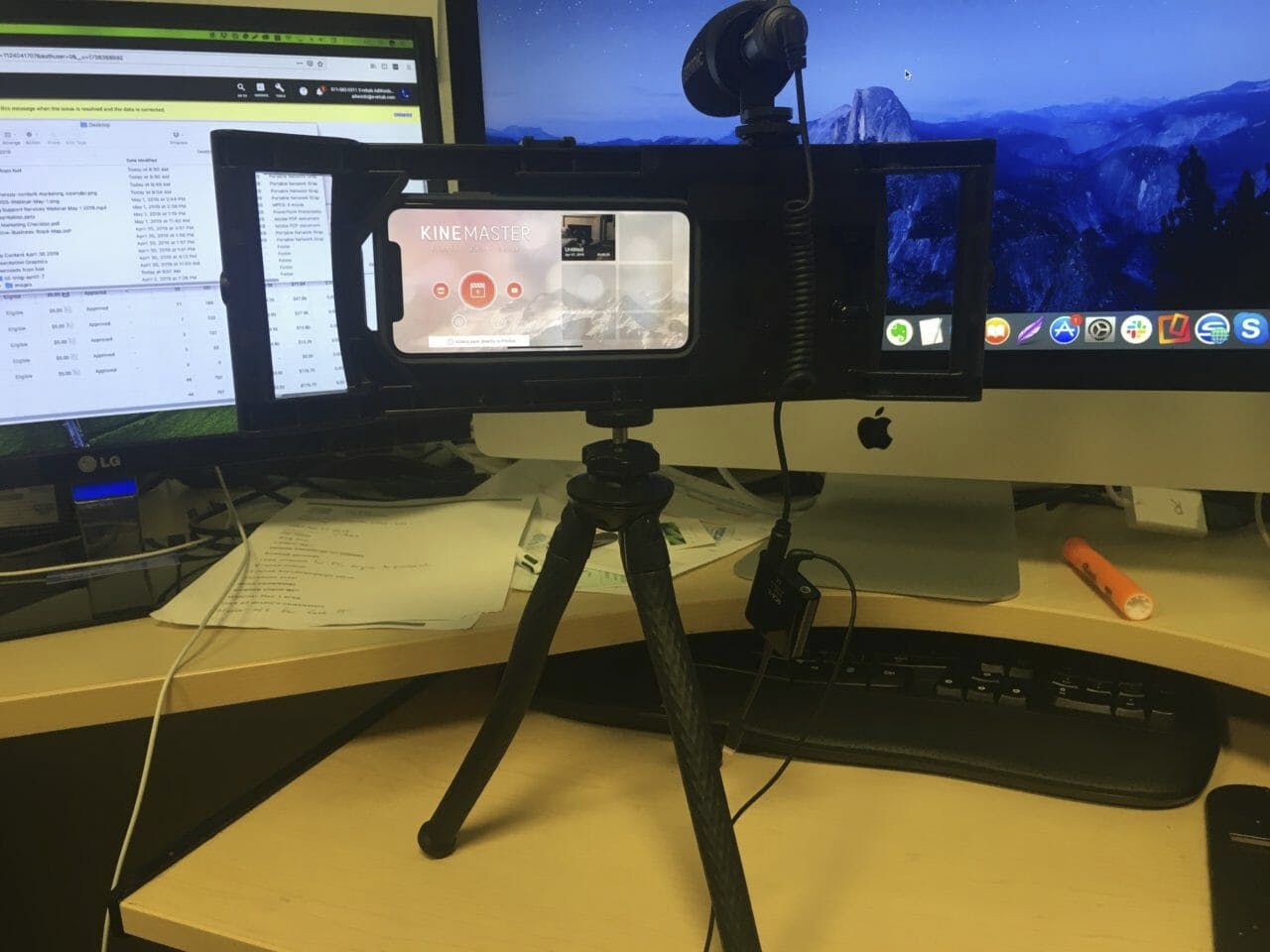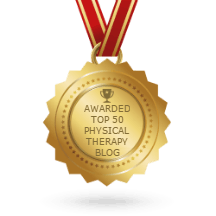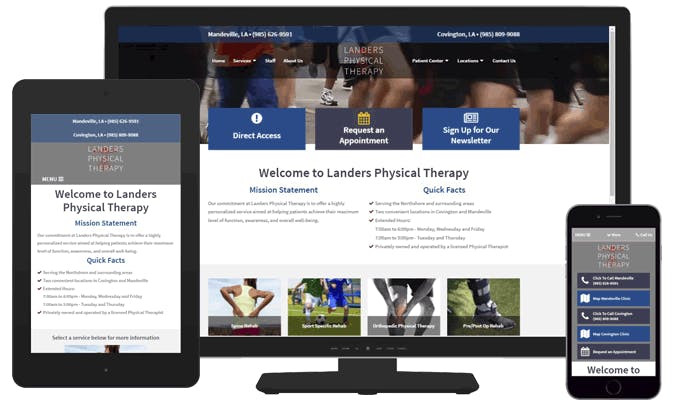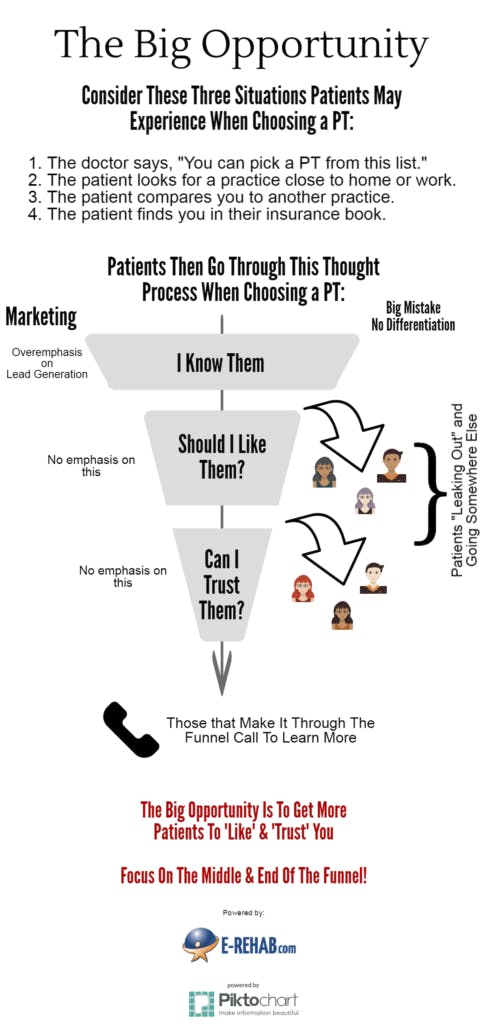When the path of a new patient appointment can begin at any time, in any location and on any device, it’s becoming apparent that physical therapy practices need to create a seamless experience across the entire process.
With so many devices available to complete a task, patients can switch between them to set their appointments. If they encounter problems across any of them, it could mean the difference between making the appointment and the potential patient moving on to someone or something different.
As a result, more and more practices should be nurturing leads through an omnichannel marketing strategy, which optimizes the experience across all patient touchpoints.
What is Multichannel Marketing?
Multichannel marketing is the concept of providing a seamless experience across all available channels relevant to the patient’s journey. This applies to the shifts and transitions in the way new patients progress through the appointment setting, treatment, discharge, and follow-up hourglass (for more on the marketing hourglass, click here).
Patients are more connected and have more control over who they choose for their rehabilitation needs than ever before, often using three or four devices to access the internet or make their first appointment. As a result, what used to be completed on one site, in one location, at one time is now completed over days, locations, times and channels.
The Importance of a Unified Profile
The multichannel roadmap is achieved by building a unified patient profile that segments the content and offers provided to them. This can only be achieved through strong multichannel marketing.
One of the challenges of multichannel marketing is the isolation of channels, which all provide data in different times with the marketing automation platform. This may include different vendors for the development of a website, email marketing, search, automation, print newsletters, and social media. As a result, patients may not recognize these disparate channels as part of the same marketing effort, which can be confusing.
A rich and deep personalization is only achieved if the data from all the individual interactions is unified to deliver:
- Messaging content that resonates with the patient.
- A frequency of messaging that the patient will respond to.
- The services the patients need.
- The types of recommendations that patients will respond to.
A responsive marketing platform captures all this patient data, such as email addresses, phone numbers, promotion responses, appointment inquiries, therapy services viewed and other touchpoints.
Once this unified patient profile is achieved, campaigns can be automated to trigger marketing activities from all channels and lead the patient through the treatment journey.

Getting Started With Multichannel Marketing
Though many practices experience it with other brands or may even be aware of the value of multichannel marketing, many struggle with some of the obstacles to creating this strategy. These include:
- Lack of resources necessary to succeed.
- Lack of communication between marketing agencies.
- Lack of practice owner support and understanding of the value of multichannel marketing.
- Organizational silos (clinical teams, front office/reception, back office/billing as examples).
Creating an omnichannel marketing strategy isn’t as difficult as it seems, however. Here’s how to get started:
Emphasize Content
With potential patients connecting over various devices in many different situations, a practice marketers need to offer information and value to keep their attention. Without valuable content, your physical therapy omnichannel marketing strategy is nothing.
For this, you need to understand what kind of content your patients consume and when. Is your content giving them what they need? Is it optimized for the device they’re using? Are you offering suggestions based on their specific needs? Are you optimizing their health and wellbeing?
On top of that, are you reactivating and cross-selling to your patients? Are you sending follow up message to those that discontinued care? Are those messages optimized for different devices?
These are just a few of the questions that need to be answered about your ideal patient, which is why you need to know all you can about your patients.

Get In-Depth Understanding of the Patient
If you want to provide a truly multichannel experience, you must have intimate knowledge of your patient. You need to understand who they are and what’s important to them (fast access to care, insurance coverage, clinical excellence), what challenges or problems they face (what they really want to return to), and how you can solve them (e.g. which one of your clinicians is best equipped to help).
To get this information, welcome patient feedback, employ social listening tools and leverage condition and treatment specific pages to find out more about their needs. Even more than that, find out which channels they use most to access your content. Your website analytics play an important role here.
Here are the channels most important for multichannel success, in order of value:.
- Brand websites.
- Mobile responsive site.
- Search engine listings
- Ratings & review sites – (Google, Facebook, Yelp, HealthGrades, etc.)
- Email marketing.
- Digital video.
- Print newsletters
- Social media marketing
- Live events.
- Local retail partners.
- Direct mail.
- Radio advertising
- Sponsorships with local schools or sporting programs.
- Coupons for free screenings.
Develop Agile Departments
One of the biggest challenges to multichannel marketing implementation is the organizational silo effect. Marketing, therapy, and customer service support often “do their own thing”, which is an obstacle to creating a seamless experience.
Fortunately, a little training on what to do, how to do it, and restructuring of traditional roles can create shared responsibility across departments, letting each team know where they fit into the bigger picture and how they relate to the work of the other departments. This not only sets clear expectations for each team, but also streamlines the communication between them.
When communication is clear and transparent, the departments operate fluidly and create agile marketing strategies that focus on the patient experience.
Start by Optimizing Your Physical Therapy Website
When patients access your site across different channels and devices, your site needs to provide them with a user-friendly experience that’s highly “responsive” to succeed. All of your web pages should be designed to provide maximum usability to visitors and to allow them to access your phone number, location map, hours of operation, ratings & reviews options, social channels, online intake forms, and important content.
Final Thoughts
In today’s channel-rich environment, multichannel marketing drives the engagement of potential patients and compels them take action. Synchronizing every touchpoint of the patient’s journey for a seamless multichannel experience elevates your practice above the competition.
Need help implementing a multichannel marketing program? Give us a call at 760-585-9097.
We’ve helped physical therapy practices generate more patients for over 15 years. If you prefer, click here to schedule a free consultation.





